2020 was a banner year for ransomware attacks. Unfortunately, ransomware in 2021 shows no signs of slowing down anytime soon. The Colonial Pipeline ransomware attack is just the latest in a long line of similar attacks targeting critical infrastructures. As phishing attacks become more sophisticated, the need for proactive protection grows along with it.
The following statistics offer a vivid look at the massive scale of this particular threat. In the year 2020 alone, there were:
- 5.6 billion malware attacks
- 3.8 million encrypted threats
- 4.8 trillion intrusion attempts
- 304.6 million ransomware attacks
COVID-19 and Ransomware
The COVID-19 pandemic and resulting wave of remote work had a profound impact on cyber security, leading to a notable rise in malware. Reports of malware spiked in the fall of 2020, as workers were sent home in droves and many IT departments scrambled to adjust for the abrupt changes. Now that the dust has settled and IT providers have mitigated these threats, the number of malware cases has fallen.
Attack on State and Local Government
State and local government entities found themselves under attack in 2020, with foreign state-sponsored intrusion attempts and attacks up by double digits with an increase in attacks on governments and municipalities in 2021. This is just the latest example of how cyber-attacks often move in waves.
While it’s easy to chalk up the following cyber security events to yet another casualty of 2020, there are a significant number of threats taking place daily that don’t hit the daily news.
- January: TikTok, a popular video sharing app was on the verge of being banned by the Federal government over possible security concerns
- February: WhatsApp identified a serious JavaScript vulnerability
- March: At the height of the COVID-19 pandemic, the WHO became the target of a sophisticated hacking attempt
- April: A serious iPhone vulnerability was discovered, causing the devices to crash
- May: A team of hackers financed by Russia targeted emails and other private communications by German chancellor Angela Merkel
- June: Mobile phishing attacks jumped 37%, a clear reaction to the wave of at-home workers
- July: A number of high profile Twitter accounts were hacked, including those belonging to Barack Obama and Elon Musk
- August: TikTok suffered another black eye when it was revealed the social media site was hiding the way it tracked its users
- September: A woman died after a ransomware attack targeted a German hospital, demonstrating the devastating real world consequences that cyber-attacks can have
- October: A politically motivated spear phishing campaign targeted the Democratic National Committee, just in time for the November election
- November: A cyber-attack on a health clinic forced the cancellation of mammograms and other lifesaving medical procedures
- December: The SolarWinds hack was discovered, representing possibly the largest and most far reaching cyber security breach in history
The State of Ransomware in 2020
While there are some notable industries that hackers targeted specifically in 2020, ransomware was up across all sectors and industries.
Bitcoin was also on the rise in 2020, and some experts think that increase can be at least be partially explained by the fact that hackers are routinely paid in this popular cryptocurrency. Ransomware is not the only reason for Bitcoin’s rise, but the timing of the increase certainly raises some questions.
Types of Ransomware Attacks
Recently, there have been several notable ransomware attacks including Ryuk, Cerber, LockerGoga and MAZE. The USA is a top target of ransomware attacks, leading the pack and suffering more intrusion attempts and successful attacks than other country – although the following states were targeted more than others:
- Florida
- New Jersey
- Maryland
- Kentucky
- Michigan
The First Step You Should Take
While we can hope your organization does not fall victim to a ransomware attack, if it does happen, what you do next will be absolutely critical. Knowing what steps to take in the wake of a ransomware attack could mean the difference between the seamless restoration of your data and the loss of significant business assets – both data wise and monetarily in terms of long-term repercussions.
If you do suffer from a ransomware attack, the first step is finding out what type of ransomware is infecting your system. Given the severity of the current epidemic, the Federal government and private agencies have amassed a huge database of ransomware, along with decryption keys that can restore damaged systems quickly without paying a ransom.
With that said, it’s best to turn to the experts and let your IT company help you determine its source. Ontech’s expert support team is always available to assist before, during or after a ransomware attack, but the better prepared you are, the more quickly you’ll be able to recover. Contact us at 262-522-8560 to learn about preventative steps you can take today to prevent a future attack.
Should You Pay the Ransom?
While it might be tempting to simply pay the ransom, especially if the sum is relatively small and the data they are holding is priceless and irreplaceable – in the long run, this approach is likely to do far more harm than good.
If you pay the ransom, you are essentially telling the bad guys that you are a willing victim and that will make you a prime target on the dark web for other ransomware attackers as well. Even when your backup plan is less than robust, you almost always have better options than paying the ransom.
Preventative Measures You Can Take Today
These best practices can protect support your efforts to minimize threats and protect your business from cyber threats.
- Consider security awareness training: Employees are the weakest link when it comes to cyber security and this specialized training can provide some much needed education about what types of threats to look for and how to avoid falling victim to attacks.
- Have a robust backup plan in place: When a ransomware attack takes place, a recent copy of all your files can significantly make it easier to recover your files and quickly recover from an attack. Contact Ontech Systems at 262-522-8560 to learn more about robust data backup and recovery solutions.
- Keep your operating systems and third party programs up to date: Software companies are always introducing new security patches, so make sure they are installed as soon as they become available.
- Protect your web traffic with a VPN: Strengthen your network protection and safeguard your critical files with a virtual private network, or VPN, that creates an encrypted tunnel between your own systems and the wider world.
If you’re ready to protect your greater Milwaukee area business from the growing threat of ransomware and other online threats, just give Ontech Systems a call at 262-522-8560 or send a request online for more information.






